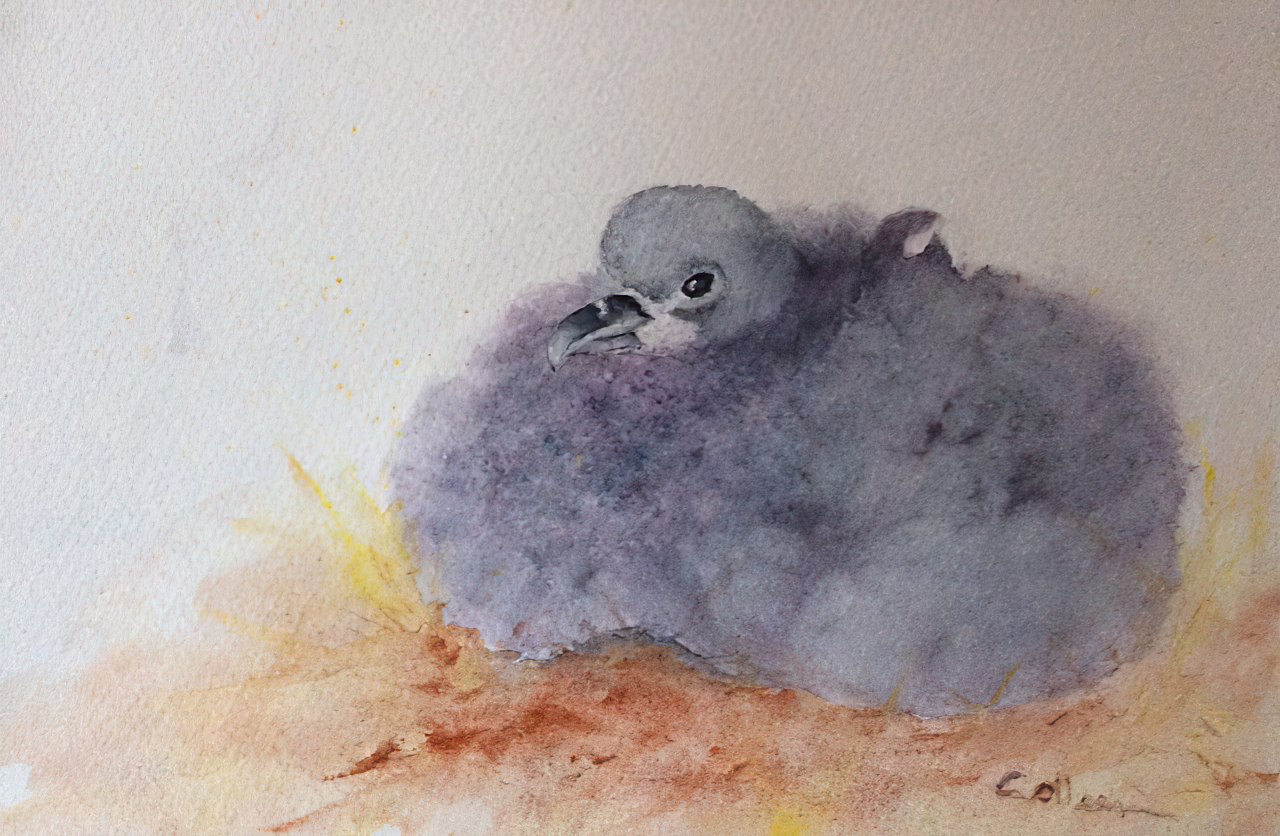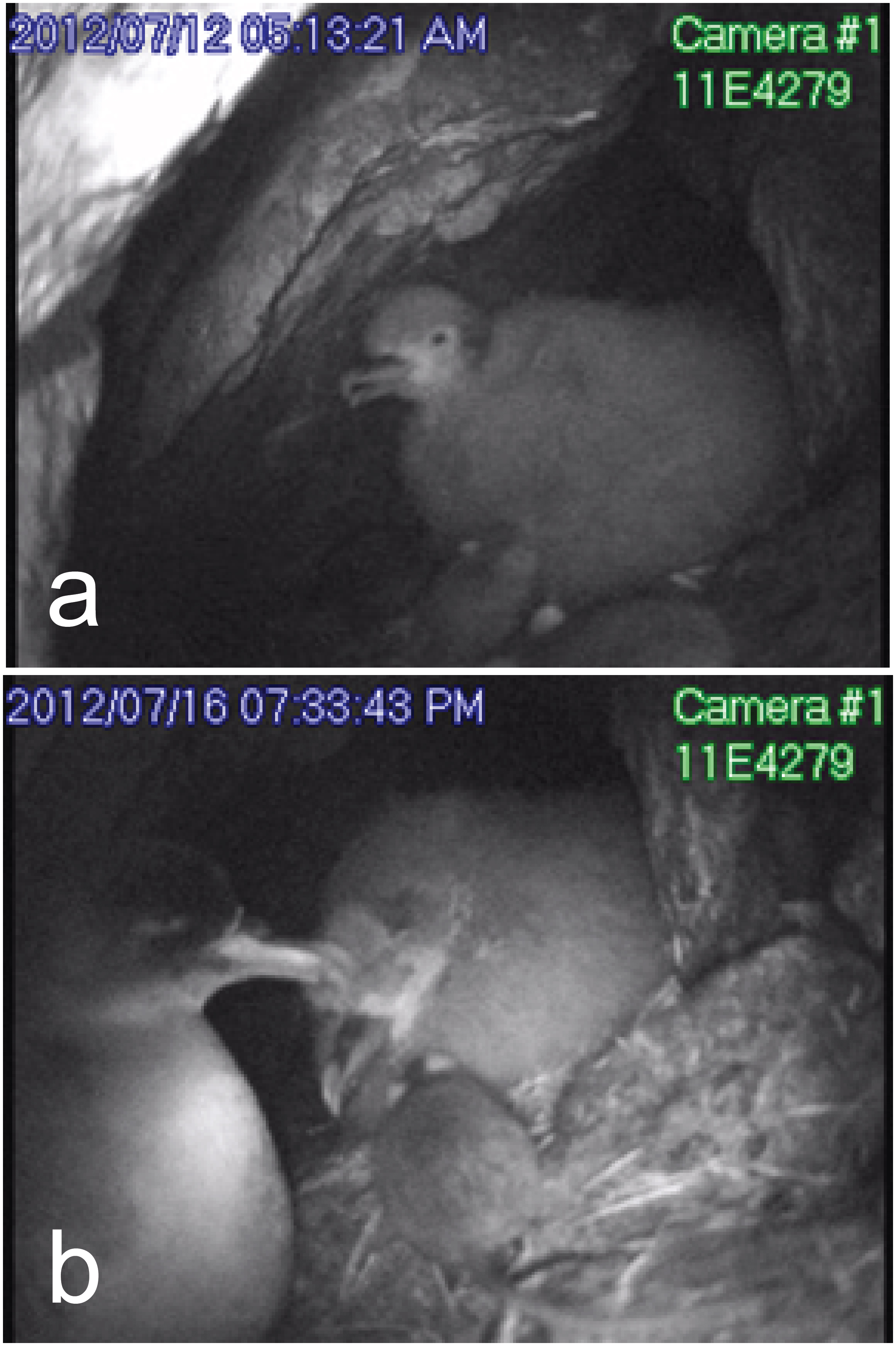
Grey Petrel chick, watercolour by Coleen Laird for ACAP, after a photograph by Michelle Risi
Ben Dilley (FitzPatrick Institute of African Ornithology, University of Cape Town, South Africa) and colleagues published in 2018 in the journal Antarctic Science on introduced House Mice Mus musculus preying upon burrow-nesting petrels at sub-Antarctic Marion Island, including on chicks of the ACAP-listed and Near Threatened Grey Petrel Procellaria cinerea.

A House Mouse approaches a Grey Petrel chick at its cave breeding site on Marion Island,
infrared video footage from the publication, photograph by Stefan Schoombie
The paper’s abstract follows:
“We report the breeding success of four species of burrow-nesting petrels at sub-Antarctic Marion Island where house mice Mus musculus are the sole introduced mammal. Feral cats Felis catus were present on Marion for four decades from 1949, killing millions of seabirds and greatly reducing petrel populations. Cats were eradicated by 1991, but petrel populations have shown only marginal recoveries. We hypothesize that mice are suppressing their recovery through depredation of petrel eggs and chicks. Breeding success for winter breeders (grey petrels Procellaria cinerea (34±21%) and great-winged petrels Pterodroma macroptera (52±7%)) were lower than for summer breeders (blue petrels Halobaena caerulea (61±6%) and white-chinned petrels Procellaria aequinoctialis (59±6%)) and among winter breeders most chick fatalities were of small chicks up to 14 days old. We assessed the extent of mouse predation by monitoring the inside of 55 burrow chambers with video surveillance cameras (4024 film days from 2012–16) and recorded fatal attacks on grey (3/18 nests filmed, 17%) and great-winged petrel chicks (1/19, 5%). Our results show that burrow-nesting petrels are at risk from mouse predation, providing further motivation for the eradication of mice from Marion Island.”
With thanks to Ben Dilley and Janine Dunlop, Niven Library, University of Cape Town.
Reference:
Dilley, B.J., Schoombie, S., Stevens, K., Davies, D., Perold, V., Osborne, A., Schoombie, J., Brink, C.W., Carpenter-Kling, T. & Ryan, P.G. 2018. Mouse predation affects breeding success of burrow-nesting petrels at sub-Antarctic Marion Island. Antarctic Science 30: 93-104.
John Cooper, ACAP Information Officer, 12 August 2021

 English
English  Français
Français  Español
Español